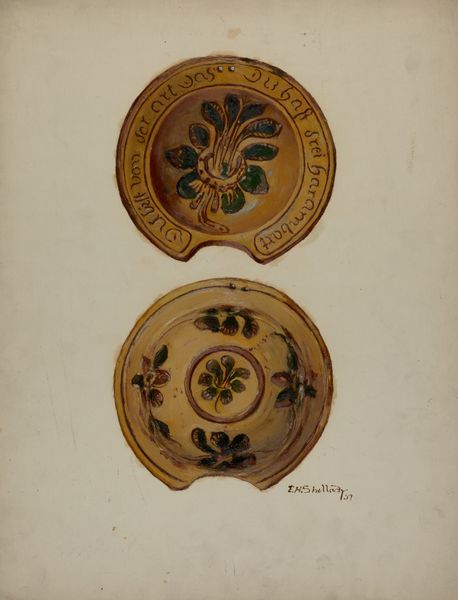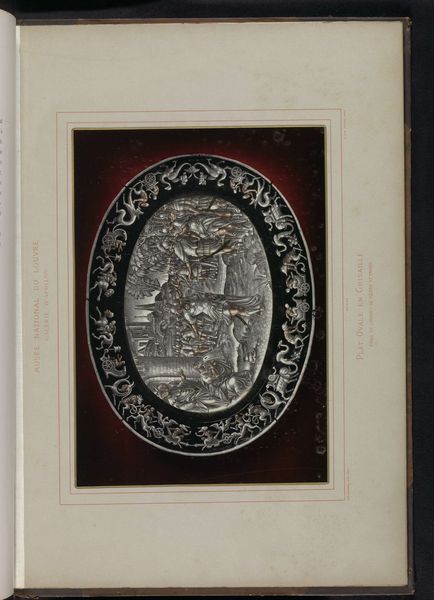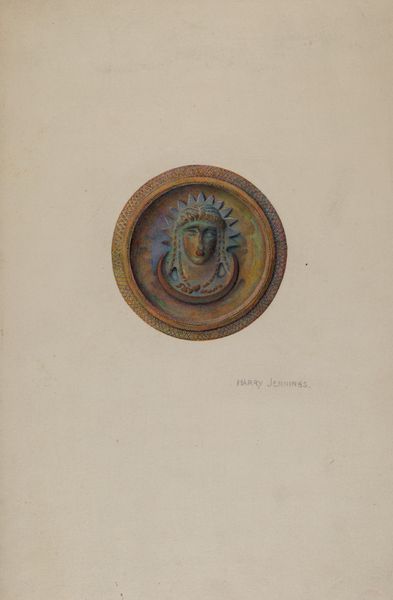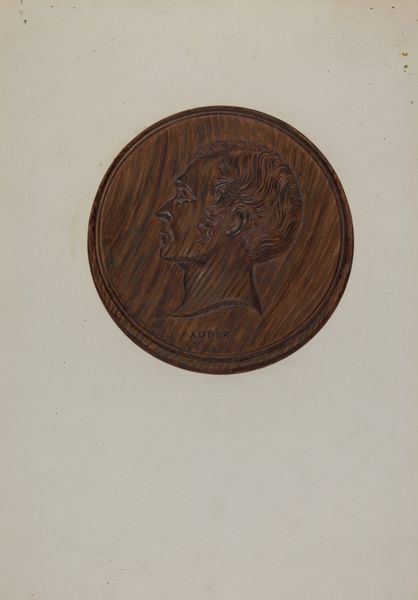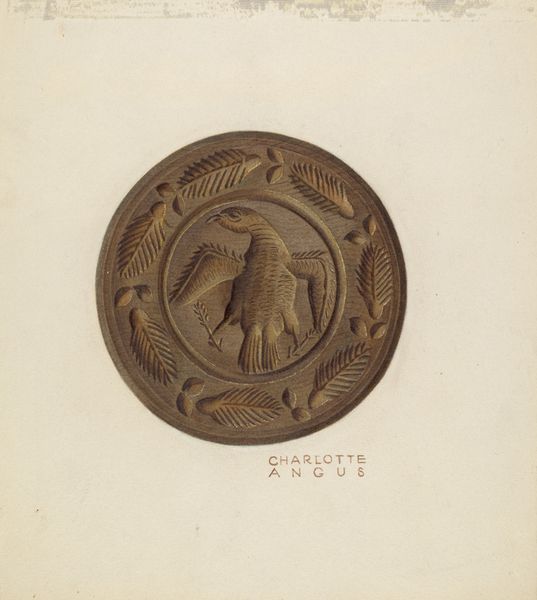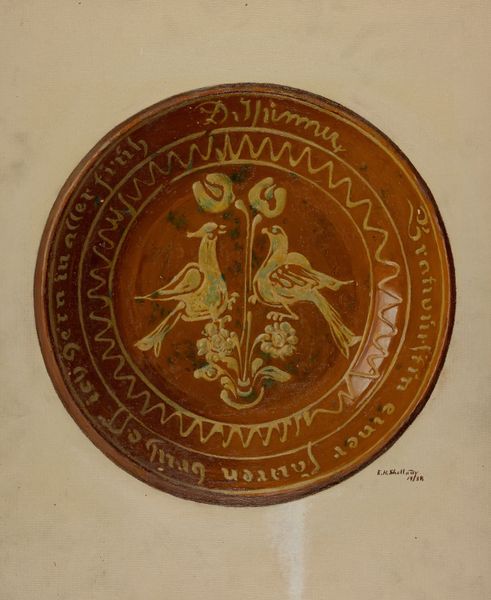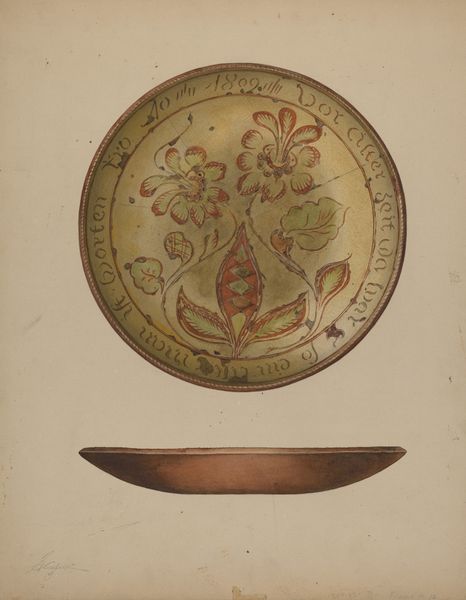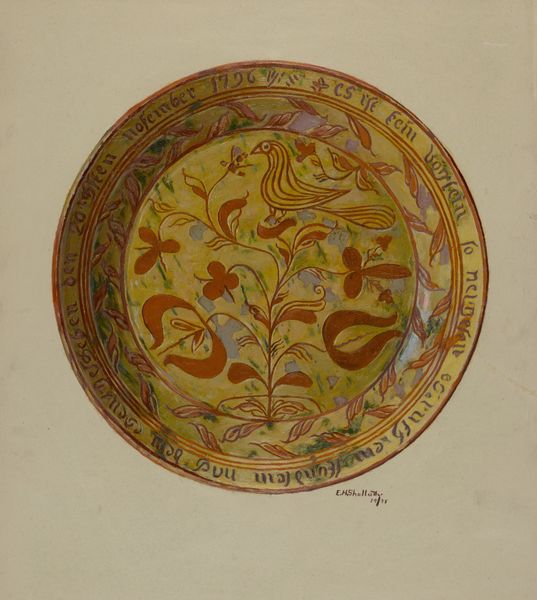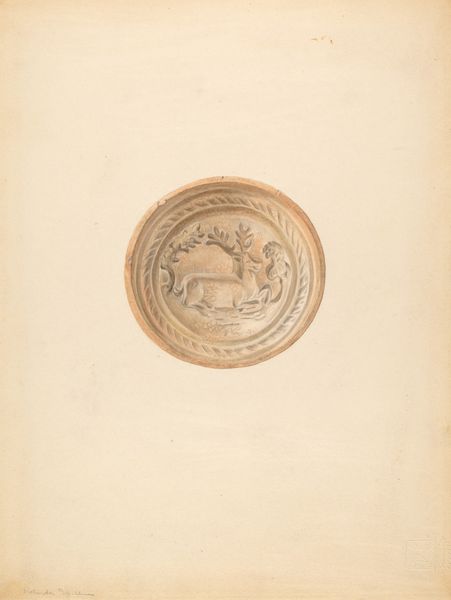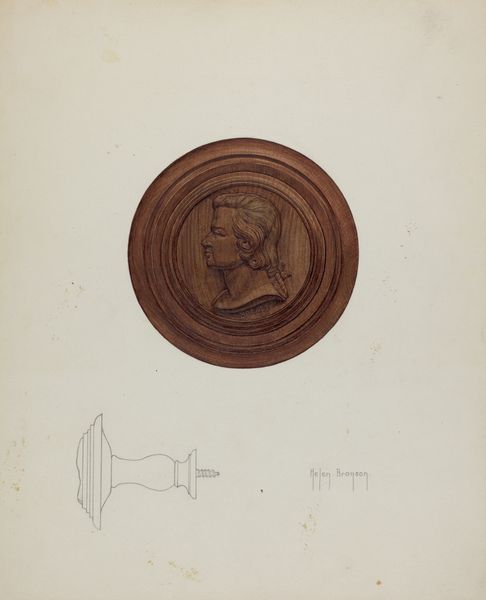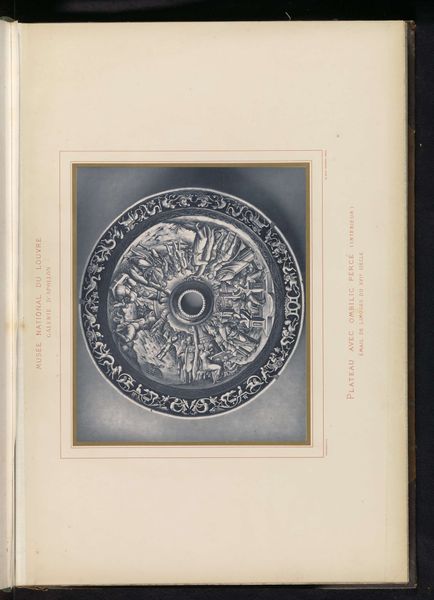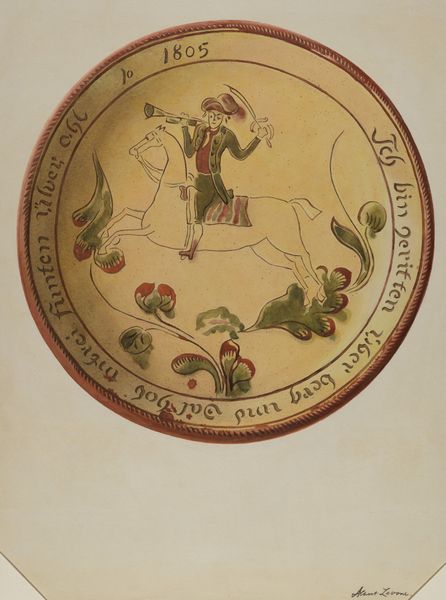
painting, watercolor
#
water colours
#
painting
#
watercolor
#
folk-art
#
watercolor
Dimensions: overall: 48.5 x 38.3 cm (19 1/8 x 15 1/16 in.) Original IAD Object: 10" in diameter
Copyright: National Gallery of Art: CC0 1.0
Editor: So, this is "Pa. German Plate," a watercolor painting from 1937 by Eugene Shellady. It's quite unassuming, but the lettering and the figures of the animals give it such a strong feeling of history and tradition. How do you interpret this work? Curator: The "unassuming" quality is key, I think. It encourages us to look closely at what folk art signifies in a society wrestling with industrialization and cultural shifts. Who is holding onto these traditions, and why? How does something like a decorated plate function as a cultural marker, a site of resistance or remembrance? What narratives are encoded in its design? Editor: Remembrance? I see that now. I mean, what does a rooster and what looks like a goose, signify on a decorative plate? Is it just folksy, or is there something deeper there? Curator: Exactly. Think about the context. It’s 1937; the Great Depression is in full swing. The interest in folk art during this period often represented a yearning for simpler times, for a connection to agrarian roots perceived as more authentic than modern industrial life. These aren’t just decorative animals; they're potent symbols. The rooster can be seen as a symbol of vigilance, courage and pride. Editor: So, this isn't simply decorative art. You’re suggesting it’s connected to social and political issues? Curator: Precisely. By revisiting these designs, Shellady is not just creating a pretty picture; he is engaging with questions of cultural identity, preservation, and perhaps even a critique of the present through the lens of the past. Who gets to define "authentic" culture and for what purposes? What are the implications of looking backward during times of great upheaval? Editor: That completely changes how I see it. I was focused on the plate itself as just… well, quaint. I hadn’t considered how the act of painting it at that time might be making a statement. Curator: And that is where the richness lies, isn't it? It challenges us to think beyond the aesthetic and consider the cultural and historical dialogues these images evoke. Editor: Absolutely. Now, I'm curious about who "Eugene Shellady" was and why he felt compelled to paint this. Thanks, this has been super insightful!
Comments
No comments
Be the first to comment and join the conversation on the ultimate creative platform.
